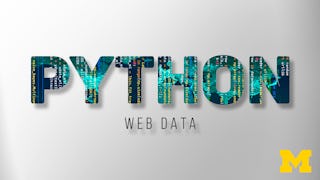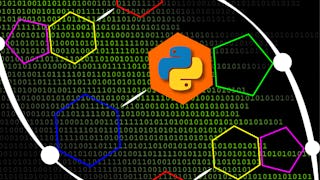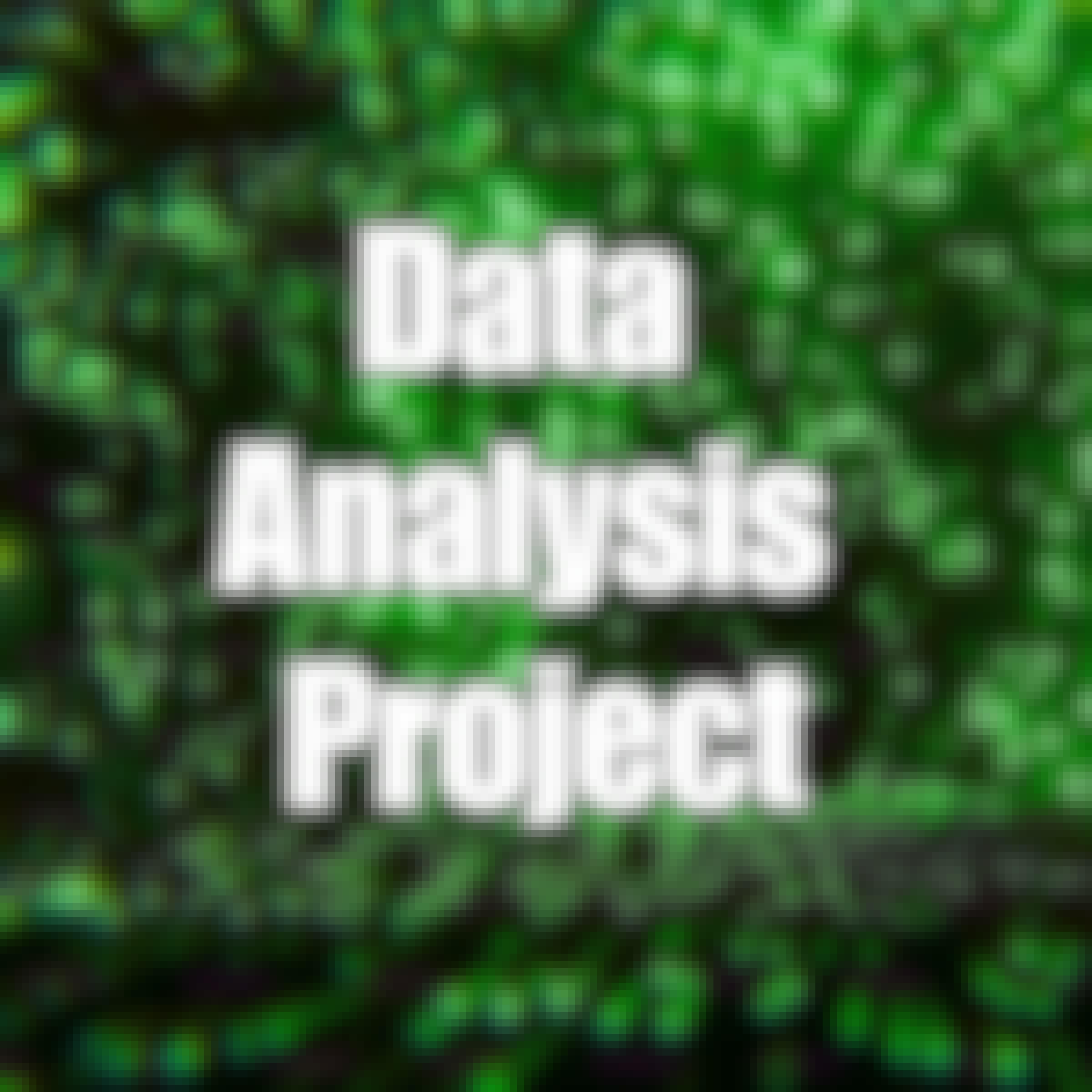Filter by
SubjectRequired
LanguageRequired
The language used throughout the course, in both instruction and assessments.
Learning ProductRequired
LevelRequired
DurationRequired
SkillsRequired
SubtitlesRequired
EducatorRequired
Explore the Data Analysis & Python Course Catalog
 Status: Free Trial
Status: Free TrialDuke University
Skills you'll gain: Statistical Hypothesis Testing, Sampling (Statistics), Statistical Inference, Exploratory Data Analysis, Regression Analysis, Statistical Reporting, Probability Distribution, Statistical Methods, Data Analysis Software, R Programming, Bayesian Statistics, Statistical Analysis, Data Analysis, Statistical Software, Statistical Modeling, Probability & Statistics, Probability, Statistics, Correlation Analysis, Data Literacy
 Status: Free Trial
Status: Free TrialUniversity of Michigan
Skills you'll gain: Web Scraping, JSON, Network Protocols, Web Services, Restful API, Application Programming Interface (API), Extensible Markup Language (XML), Data Import/Export, Data Access, TCP/IP, Python Programming, Hypertext Markup Language (HTML), Data Capture, Development Environment
 Status: Free Trial
Status: Free TrialJohns Hopkins University
Skills you'll gain: Bioinformatics, Data Structures, Jupyter, Python Programming, Programming Principles, Scripting Languages, Scripting, Data Processing, Computer Programming, Data Manipulation, File Management

Coursera Project Network
Skills you'll gain: Web Scraping, Data Visualization, Data Presentation, Data Cleansing, Exploratory Data Analysis, Scripting, Data Analysis, Data Manipulation, Data Import/Export, Data Capture, Data Transformation, Python Programming, Jupyter
 Status: Free Trial
Status: Free TrialJohns Hopkins University
Skills you'll gain: Exploratory Data Analysis, Data Visualization, Plot (Graphics), Ggplot2, Dimensionality Reduction, Data Visualization Software, R Programming, Scatter Plots, Graphing, Box Plots, Data Analysis, Histogram, Statistical Analysis, Unsupervised Learning, Color Theory
 Status: Free Trial
Status: Free TrialMultiple educators
Skills you'll gain: Dashboard, Pseudocode, Jupyter, Algorithms, Data Literacy, Data Mining, Pandas (Python Package), Correlation Analysis, Web Scraping, NumPy, Probability & Statistics, Predictive Modeling, Big Data, Automation, Data Visualization Software, Data Collection, Data Science, GitHub, Machine Learning Algorithms, Unsupervised Learning

Coursera Project Network
Skills you'll gain: Data Visualization, Data Storytelling, Pandas (Python Package), Data Analysis, Data-Driven Decision-Making, Exploratory Data Analysis, Analytical Skills, Business Analysis, Data Manipulation, Data Cleansing, Data Import/Export, Promotional Strategies
 Status: Free Trial
Status: Free TrialUniversity of Michigan
Skills you'll gain: Data Structures, Python Programming, Programming Principles, Data Import/Export, Data Manipulation, Development Environment, File Management
 Status: Free Trial
Status: Free TrialUniversity of Colorado Boulder
Skills you'll gain: Dimensionality Reduction, Data Analysis, Supervised Learning, Anomaly Detection, Machine Learning, Machine Learning Algorithms, Statistical Analysis, Unsupervised Learning, Data Mining, Analytics, Predictive Modeling, Regression Analysis, Scikit Learn (Machine Learning Library), Classification And Regression Tree (CART), Exploratory Data Analysis, Statistical Methods
 Status: Free Trial
Status: Free TrialRice University
Skills you'll gain: Microsoft Excel, Pivot Tables And Charts, Graphing, Spreadsheet Software, Excel Formulas, Data Analysis, Histogram, Scatter Plots, Data Visualization Software, Data Manipulation, Data Import/Export
 Status: Free Trial
Status: Free TrialFractal Analytics
Skills you'll gain: Exploratory Data Analysis, Feature Engineering, Data Visualization, Statistical Analysis, Probability & Statistics, Statistics, Data Wrangling, Pandas (Python Package), Data Analysis, Jupyter, Data Processing, Data Manipulation, Data Science, Descriptive Statistics, Data Transformation, Applied Machine Learning, Data Cleansing, Python Programming
 Status: Free Trial
Status: Free TrialUniversity of California, Santa Cruz
Skills you'll gain: Bayesian Statistics, Statistical Inference, Data Analysis, Probability, Statistical Modeling, Statistical Analysis, Microsoft Excel, Probability Distribution, R Programming, Regression Analysis
Data Analysis With Python learners also search
In summary, here are 10 of our most popular data analysis with python courses
- Data Analysis with R: Duke University
- Using Python to Access Web Data: University of Michigan
- Python for Genomic Data Science: Johns Hopkins University
- Scrape and analyze data analyst job requirements with Python: Coursera Project Network
- Exploratory Data Analysis: Johns Hopkins University
- Data Science Foundations: IBM
- Data Analysis with Python: Inform a Business Decision: Coursera Project Network
- Python Data Structures: University of Michigan
- Data Analysis with Python Project : University of Colorado Boulder
- Introduction to Data Analysis Using Excel: Rice University










